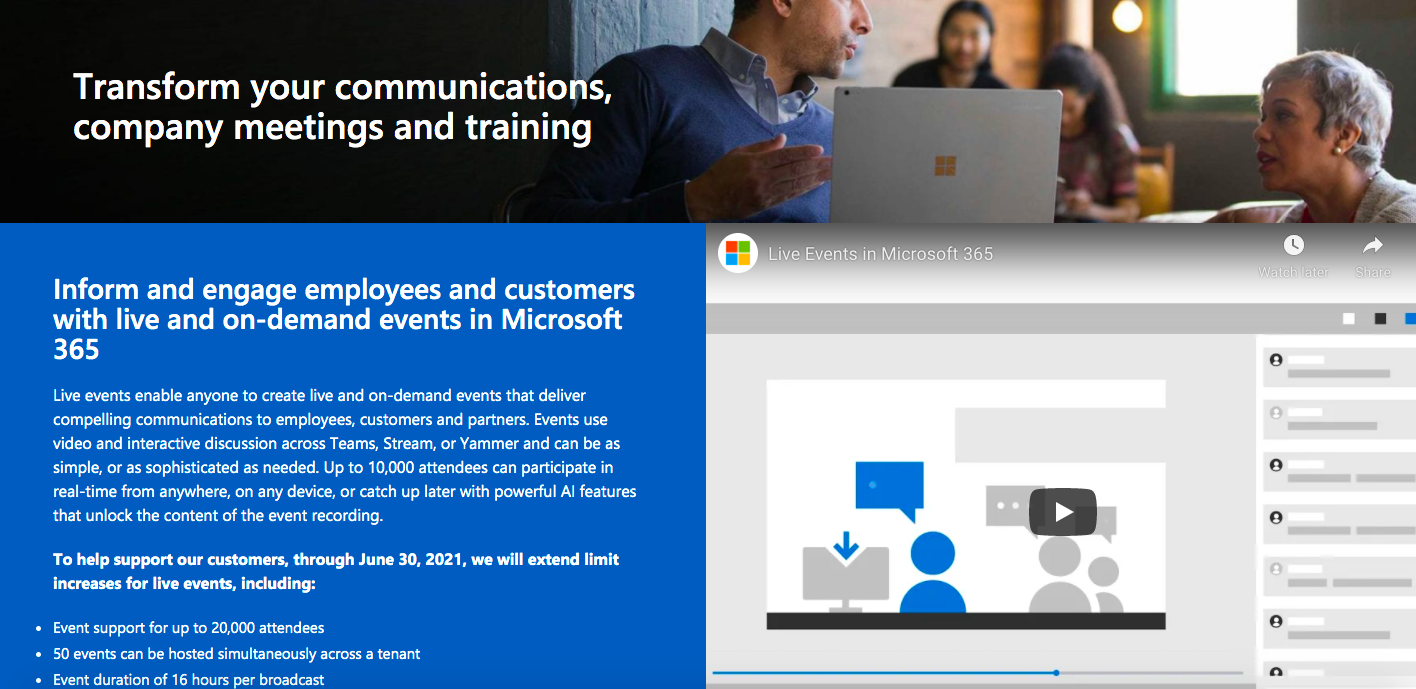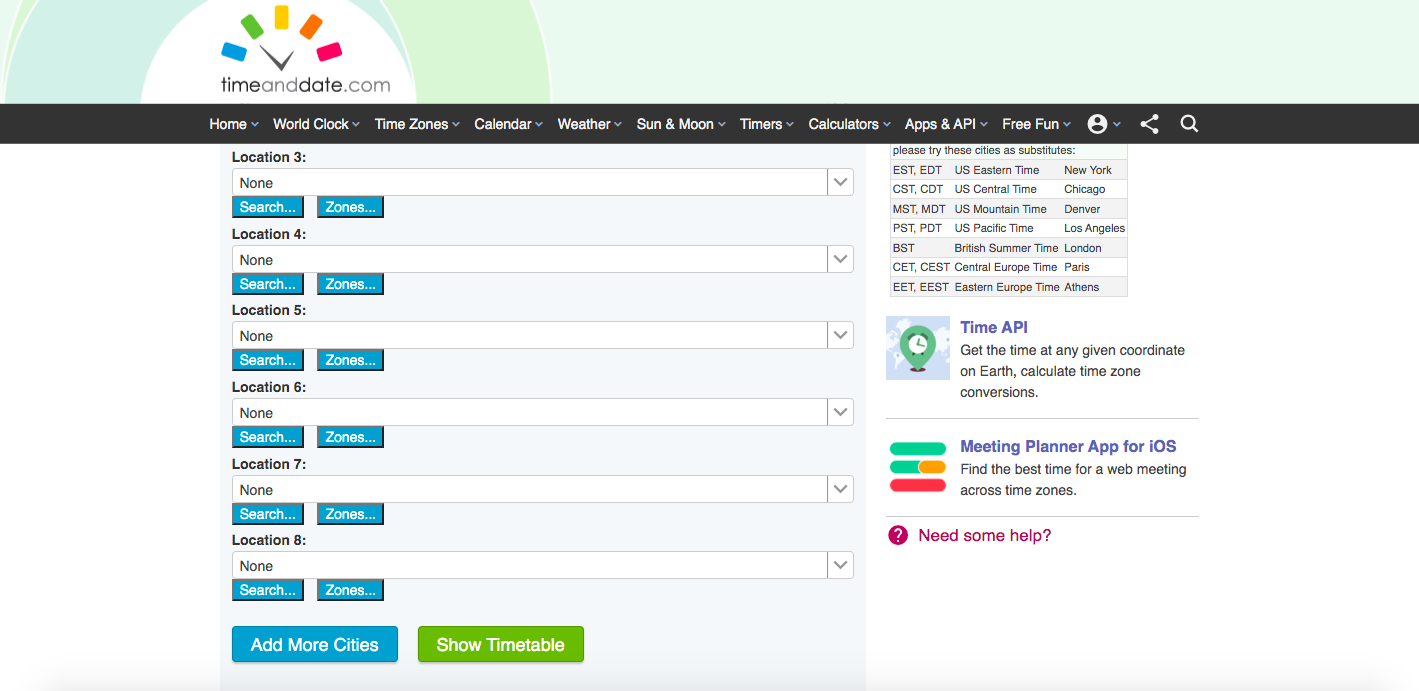![17 Benefits of Video Conferencing [+4 Disadvantages] 17 Benefits of Video Conferencing [+4 Disadvantages]](/sites/default/files/image_1588.png)
The COVID-19 pandemic has led to significant changes in the way organizations operate over the last year. Video meetings have replaced in-person meetings because they bring greater convenience that drives efficient and cost-effective collaboration.
If you want to transition to virtual meetings but are still not familiar with the advantages, you’ve come to the right place. In this article, we will discuss the benefits of video conferencing that can effectively bring your teams together and improve organizational communication in real-time.
Quick Reads
- What Is Video Conferencing?
- 17 Advantages / Benefits of Video Conferencing
- Top 4 Disadvantages of Video Conferencing
- What Technologies Are Used in Video Conferencing?
- Video Conferencing Statistics
- What Kind of Organizations Use Video Conferencing?
- How Your Organization Can Benefit From Glue Up Video Conferencing Solution
What Is Video Conferencing?
Video conferencing is the exchange of communication between two or more individuals in different locations, with the use of both audio and video to enhance the overall experience.
Today, it integrates webinar software that offers features and tools that are effective in increasing engagement, boosting productivity, and promoting collaboration.
With many global companies that have embraced the move to remote work, video conferencing is slowly becoming the “new normal” that affects the way we communicate, work, and learn. With the help of mobile application development services, you will find numerous video conferencing tools in the market.
17 Advantages / Benefits of Video Conferencing

1. Effective Communication
Research has shown that displaying good visuals to the audience is key to understanding information more quickly than any other type. In fact, the human brain processes images 60,000 times faster than text.
In addition, according to another research, “…auditory recognition memory performance is markedly inferior to visual recognition memory.” Therefore, adding video to an audio-only conference makes it easier for participants to remember and understand the meeting’s key takeaways.
2. Build Meaningful Relationships
Participating in a video conference helps establish meaningful relationships. Attendees should make a video call more fun and engage by treating it like a physical meeting.
When you’re on a conference call, make sure that you give your undivided attention to each person you talk to. Keep in mind that face-to-face interactions and socialization lead to greater feelings of social belonging, maintaining good business relationships.
3. Cost-Efficient
Business owners can significantly eliminate building and maintenance costs by using video conferencing to engage with participants remotely instead of internal, in-person meetings.
Also, a video-based meeting reduces employees’ travel expenses by allowing them to communicate face-to-face and online, even from the comfort of their homes.
4. Saves Time
Reduced travel or commuting time is one of the most significant business benefits of video conferencing. A conference host can ensure an effective virtual meeting—one that happens in a well-planned, controlled setting, which can reduce the logistics costs of travel and accommodations.
In addition, the use of video technology allows participants to share digital presentations from different parts of the world in seconds.
5. Reliable and Streamlined Communication
Teams require collaboration solutions that let them meet and communicate projects online through screen sharing, real-time messaging, and of course, video conferencing.
You can provide more high-quality and reliable video conferencing nowadays to employees, especially when you integrate it with technology. There are several platforms that you can use today that offer advanced technological solutions that increase the productivity and efficiency of meetings.
6. Increases Efficiency
Companies today rely on technology to effectively connect their workforce virtually and boost collaboration among remote teams. When employees work collaboratively, they will find their sense of purpose in the organization which can help improve productivity.
Srini Koushik said in a report, that video conferencing drives efficiency and growth. He also added that it’s one of the many factors you should prioritize for “high-quality engagement and collaboration.”
7. Improved Productivity
In a report that surveyed more than 1,300 business professionals across age groups and industries, at least 43% of respondents said video conferencing has improved team productivity when in different locations. An individual can easily share documents on the screen to review during a video conference than when in an in-person meeting.
Every virtual conference should end by sharing documents that include action items with people in the workgroup. We suggest that organizations use cloud-based file-sharing servers instead to ensure the seamless transfer of files.
8. Quick and Easy Meeting Scheduling
If participants don’t need to travel to join a meeting, they are more likely to attend more sessions. Therefore, attending a video conference instead of an in-person one can boost meeting attendance.
In addition, it’s easier to set meeting schedules with your team using this format. They only need to note the date and time of the meeting without considering the time spent on commute, especially if you are considering higher-ups and executives with busy schedules.
9. Accurate and Consistent Records
Video conferencing lets you record meetings, which you can keep to show and remind everyone what was discussed and agreed upon. Doing so ensures that no one has to miss out on any of the business presentations.
In the same way, managers need to have records they can refer to, which are helpful to monitor and learn how the organization has been performing.
10. Set Up Live & Virtual Events
This type of video technology lets you broadcast your company’s video and meeting content simultaneously to the audience of a virtual event. It’s a one-to-many type of communication wherein the event host leads the conference and shares the presentation with other attendees.
Microsoft 365 live events let you offer interactive and engaging live video streaming experiences to employees and customers. It’s an excellent tool for a successful transformation of communication, as you can easily create live and on-demand events that deliver compelling messages to your target audience.

11. Better Engagement Than Audio Conferencing
Joining a video conference is far more engaging than an audio conference. Attendees are less likely to “zone out” or perform other tasks than they usually do in the latter. For this reason, you can improve attendee engagement, especially when you encourage everyone to actively participate in a virtual meeting by incorporating some strategies.
12. Connects Remote Team and Builds Culture
Team diversity allows you to build high-performing inclusive teams that are key to organizational success. Video conferencing enables you to scale up and diversify your remote team. For instance, you can build fully functioning teams of employees in your country or different parts of the world.
13. Creates Effective Meetings
You can send out the agenda and objectives before the online meeting, so participants already know what to expect. During the meeting, you can set rules, take breaks, and discuss the following steps to perform once the session has ended. Avoid lengthy discussions during the conference because they can exhaust attendees and even cause fatigue.
14. Promotes Work-Life Balance That Helps Retain Employees
People appreciate organizations that give them the freedom to work from wherever they want. The ability to deliver projects remotely with video conferencing plays a huge part in the workforce's success while creating a culture that supports work-life balance.
For those who engage in the daily commute to work, video conferencing offers another perk in maintaining a standard work schedule that offsets their travel time.
15. Digital/Remote Workforce Management
Video conferencing has become essential for business success and has kept us all in touch since the onset of the COVID-19 pandemic. But even before the crisis, there’s no denying that video calls have been on the rise already. The business economy continued to thrive back then, and business leaders started to employ remote workers from around the world.
Video conferencing simplify workforce management. It helps you establish a direct line of communication with your employees and preserve face-to-face interactions with teams, which is crucial in a time when people are working remotely.
16. Superior Learning Experience for Employees
Conduct effective remote training sessions via video conferencing. They allow participants to learn and interact with others outside their workplace using virtual conferencing tools.
Creating training videos lets you control the messages you want to communicate during general meetings or training programs. In this way, you can deliver a consistent presentation to all attendees.
Furthermore, videos are more enjoyable because they create a more engaging sensory experience. Employees are 75% more likely to watch a video than read print journals.
17. Recording and Playback Options
Another great advantage of conducting a meeting or training through video conferencing is you can record and play it at any time. For example, training videos can be paused, slowed down, or replayed. This means that participants can quickly go back to the recording and understand it at their own pace.
Top 4 Disadvantages of Video Conferencing

While the advantages of video conferencing in business are plenty, there can be several drawbacks to it compared to in-person meetings. Let’s discuss them.
1. Lack of Personal Interaction
Video conferencing is less personal compared to meeting in person. You can miss out on body language in this format, which is essential in understanding a person’s communication message.
Second, physical contact is vital when building trust and connection. Most business and social gatherings begin with a handshake or a hug. Unfortunately, these preambles needed to establish a meaningful relationship do not happen during a video conference.
2. Working With Teams in Different Timezones
Time zone differences can pose some challenges when participating in a video conference with people from other parts of the world. Finding the perfect time to schedule a meeting can be difficult, especially for the non-tech savvy.
Are you planning to arrange a video conference across different time zones? Time and Date’s Meeting Planner helps you find the common time to talk and collaborate to make sure the entire team stays on the same page.

3. Technical Difficulties
Some disadvantages are the technical difficulties associated with compatibility issues, network failure, time lag, among others. On some occasions, the absence of technical support brings challenges for participants who are non-tech savvy.
4. High Setup Cost
Setting up video conferencing in an office can be a bit expensive. Simple features may fit into the budget, but software costs can soar if advanced features are required.
Some of the factors that determine the setup cost of video conferencing are subscription fees, bandwidth/audio conferencing fees, IT troubleshooting, infrastructure, and end-user troubleshooting.
What Technologies Are Used in Video Conferencing?

Video conferencing makes it easier to improve business productivity and keep people connected. But before you can do that, below are the essential tools and technology you need to host a successful virtual meeting.
1. Software
An organization can work more effectively using video conferencing software that enables online communication for conferences, meetings, and seminars. It offers smart video meeting key features like screen sharing, multiple webcam capabilities, HD video, recording, among others.
2. Video Input/Output
Video conference participants need a tool that allows face-to-face communication online, making it easy to see what happens and to engage in discussions visually. Video input devices are used to digitize images to the online audience. Some examples are a digital camera a web camera that you attach to a computer when recording a video or streaming from the web.
On the other hand, a video output device is any equipment that displays the images from the online conference. It can be a desktop monitor, a laptop screen, a television, a video projector, or an LCD display.
3. Audio Input/Output
Audio input devices allow users to send audio signals to a computer for processing, recording, or carrying out commands.
Devices such as microphones let you speak to the computer when recording a voice message or using voice control on a computer. Depending on the conference setup, it could be a built-in microphone on a laptop or a standalone one.
On the other hand, an audio output drives a signal into another device’s audio input. They are found on audio-generating devices such as speakers, an audio system, or a pair of headphones.
For example, you have to connect the TV’s audio output to the speaker’s audio input so the TV can play sound through the speakers.
4. Acoustic Echo Cancellation Equipment
Acoustic echo cancellation technology recognizes and eliminates the echo as quickly as possible to achieve the best audio quality. The process is challenging since there are several factors to take into consideration.
For instance, the echo cancellation should continue to work even in situations when there’s plenty of background noise or where both sides of the conversation are talking at once.
Video Conferencing Statistics
According to video conferencing statistics for 2021, its projected market growth can reach a CAGR of 11.45% from 2020 to 2026. Some predictions reveal that it may go beyond $9 billion by 2026.
During the first half of 2020, at least 40 million users participated in a video conference every day on Skype. The communication tool’s usage statistics reveal that the COVID-19 pandemic caused a 70% increase in its users over the last couple of months.
What Kind of Organizations Use Video Conferencing?
Technology has completely transformed the way we communicate and connect. Video conferencing is used in associations, education, manufacturing, healthcare, legal, and finance.
In certain types of organizations, video conferencing is used extensively for various reasons: bringing in subject matters from across the world, offering distance learning, communicating with medical specialists, and enabling international collaboration, among others.
How Your Organization Can Benefit From Glue Up Video Conferencing Solution
If your organization is seeking to launch video conferences and provide your attendees with a premium and seamless experience, book a demo of Glue Up’s Webinar Management Software.
Webinar Engagement Solution allows attendees to easily access the meeting agenda and presentations. They can also exchange business cards, request meetings, connect and chat with each other through the platform. What’s more, they can speak and share their insights with panelists during webinars or conferences.
You can also enable screen sharing, which can help them bring more depth and power to the insights they intend to express. Powered by a reliable network, attendees can expect real-time voice and video conferencing that’s clear, safe, and secure.



